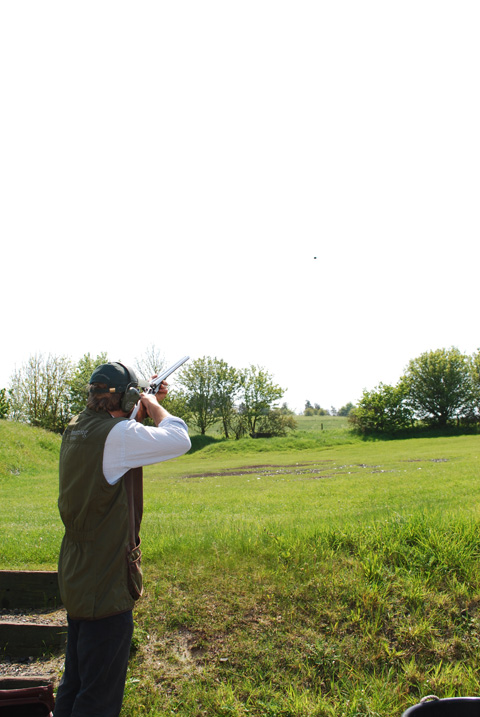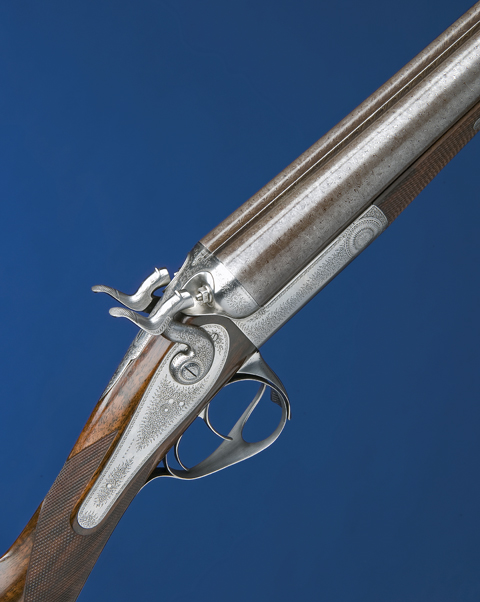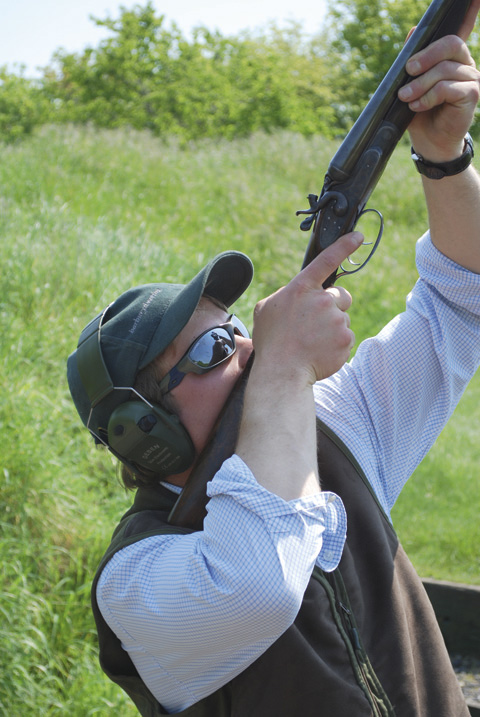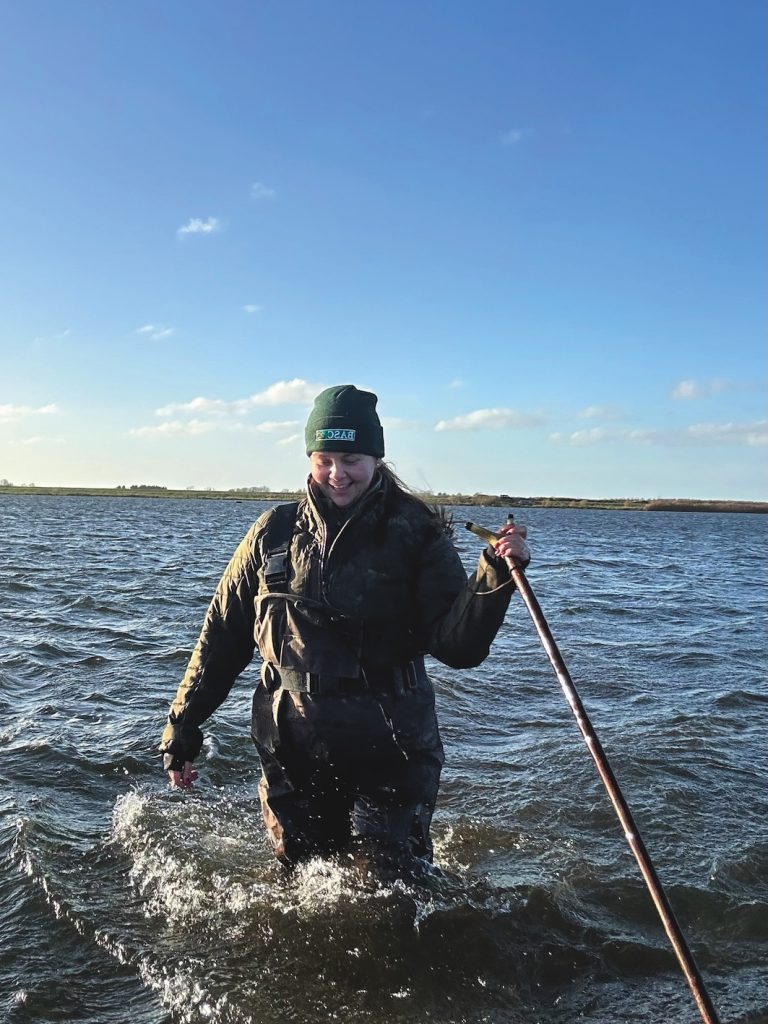Win CENS ProFlex DX5 earplugs worth £1,149 – enter here
Hammer guns: an introductory guide and celebration
Hammer guns: If one know how to use them, hammer guns are as safe as modern hammerless guns.

As someone who first picked up a hammer gun for a day’s grouse shooting almost 30 years ago, I am by no means the only shooter to have experienced the nostalgia associated with them.
They are part of shooting’s history; a link between the percussion shooting system and the modern hammerless design that was created to make best use of the improvements in breech-loaded, centre-fire cartridges.
Early hammer guns required the user to manually pull back the hammers to half-cock before reloading. Forget to do so and the closed hammer could strike the cartridge primer as the gun was closed. Users had to exercise vigilance to prevent an accident.
However, the rebounding lock which was developed in the late 1860s, was a huge step forward in terms of safety. Further safety features also prevented the half-cocked hammers from moving in the event of an external blow to the gun. Only if the trigger was pulled could the hammer release.
My desire to learn more about hammer guns led me to visit Wayne Hurt, proprietor of the Cotswood Gun Room at Lechlade, Wiltshire. A member of the Worshipful Company of Gunmakers, Wayne started his business in 2004 as a development of a hobby collecting game guns and historical shooting memorabilia.
Wayne’s enthusiasm for hammer guns is as clear as his eclectic knowledge of them. The Gun Room itself is a seventh heaven for the shooting enthusiast. The eyes are instantly drawn to the racks of Damascus-barrelled, highly polished Purdey, Boss and similar hammer guns alongside an extensive library and collections of accessories and prints. 
I asked Wayne what motivates buyers to seek out a hammer gun. His opinion, based on many years trading to both the European and American markets, is that a range of potential owners exists. “Some are looking for an investment,” he explained.
The price of hammer guns has greatly increased in recent years as their popularity has grown. Purdeys, for example, were hugely expensive and made to order for such notable buyers as Lord Ripon and HRH The Prince of Wales. Only about 100 Purdey hammer guns were ever made and they are, therefore, becoming very hard to find.
Ninety per cent of buyers want a gun to use. English hammer guns have become popular in America and once exported they seldom return to the country of their creation. I use the word “creation”, for to describe these works of art as “manufactured” is to fail to do justice to the engineering and artistic skill that has gone into making them. In America, hammer guns are used to shoot clays as well as game and are frequently seen at popular ‘vintage’ shoots.
By far the most familiar reason for purchase is the previous experience of people who shoot with hammer guns. Words such as balance, beauty and handling are commonly used to describe the comfortable way that these guns rest over the arm and the smooth means by which they swing into the shoulder.
Wayne described how at least 50 per cent of his customers go on to buy a different gun from the one they had set out to once they start trying his selection for comfort and fit.
What should the prospective buyer be looking for? Wayne only sells guns once they have passed stringent tests for barrel thickness, nitro-proofing carried out at London Proof House, and have been thoroughly field tested and cleaned. As all hammer guns were used at a time when cartridges were made with a more corrosive propellant than the modern-day equivalent, it is important to check the barrels for pitting, and the action for signs of corrosion.
Pitting can be polished out but when this is done at the price of barrel thickness then the danger is clear. Nitro-proofing is also essential. The proof house will test the gun at pressures far greater than it will be subjected to in the field. If it passes, it will undoubtedly be safe.
Rebounding locks are also a desirable feature. Although they increase the likely price of the guns they are an important safety mechanism and make the gun easier to use. 
What are they like to fire? With three guns that seemed most likely to suit my tall frame, Wayne accompanied me to Barbury Shooting School in the heart of the Marlborough Downs, where he had organised a selection of stands to put them to the test. An example of the proficient killing potential of all three hammer guns was provided by Barbury’s owner, Huw Stephens, who dusted clays representing driven partridge, a pheasant and a running rabbit.
I followed him and loaded two cartridges into the first of my chosen guns. It was a beautiful boxlock ejector made by Norman of Framlingham in about 1880. Valued at around £9,000 it was a good example and a rarity for a hammer gun because it employs ejectors to extract spent cartridges.
The hammers pulled back smoothly and as I waited for the first clay the gun felt light in my hands. The first clay hit the sky and I raised the polished walnut stock to my shoulder. An instant later the clay was broken and I was on to the second.
Fear of embarrassment overcome, I then began to get the feel of the ‘Norman’ as the clays continued to fly. The balance that Wayne had described was apparent, as was the smoothness of the trigger action as the hammers were released. Following the Norman I shot with a Purdey with Damascus barrels (also made in the 1880s) and then a Boss of London, again from the 1880s.
All three handled and performed perfectly and were a pleasure to shoot with.
Hammer versus hammerless – the case for safety
Setting aside the all-encompassing argument that the only safe gun is an unloaded one, the debate is far from simple and contains many variables. Hammerless guns include those with simple trigger locking devices, through to the best boxlock and sidelock guns fitted with intercepting safety sears that physically prevent the cartridge being fired due to mechanical failure or a physical blow. Not all safety catches on hammerless guns are automatic; some require the user to re-set after use.
With hammer guns not fitted with rebounding locks it is necessary to remember to pull the hammer back to half-cock before unloading to prevent the firing pins hitting the cartridge as the gun is closed. A rebounding lock returns automatically to the half-cock position after the gun is fired.
Hammerless guns are always cocked, ready to fire when closed. Not so hammer guns, which require the hammer to be pulled back. A hammer gun without rebounding locks could be accidentally fired if the hammer was struck when in the down position; equally, a hammerless gun without intercepting safety sears can be caused to fire if closed and then dropped or struck hard.
Both the hammer gun and the higher quality hammerless (with safety sears) require the trigger to be physically pulled before the gun will fire. Both are, therefore, relatively safe if dropped or struck.
Returning the hammer gun from the full-cock to the half-cock position if not fired involves a risk that the hammer will slip and strike the cartridge. To prevent this, the hammer is shaped and designed to grip the thumb and the user knows to point the barrels safely to the sky when this is done.
Hammer guns are described as being easier to use with gloves and in the rain where wet hands can slip on safety catches. Even if the thumb slips off the hammer during cocking, the gun cannot fire as the hammer will only return to the half-cock position. Safety catches on hammerless guns are themselves small; it is easier to spot if a hammer gun is fully cocked and ready to fire.
A guide to hammer gun etiquette
1.
As with a hammerless gun, make sure your hammer gun is open when in company. Closed and uncocked it may be safe but it needs to be seen to be safe.
2.
On a driven shoot, only the most experienced shot should use a hammer gun with non-rebounding locks. In the heat of the moment reloading could lead to an accidental discharge.
3.
Make sure your gun is serviced and in proof, and only use suitable cartridges.
4.
Barrels should be pointed skyward before pulling back the hammers.
5.
After firing, point the gun safely into the ground before unloading. If no shot was fired, uncock the hammers with the barrels still pointed skyward.
6.
Using an attractive hammer gun will bring you to the attention of your fellow guns. Make sure you know how to use it safely. Practice loading, firing and unloading until smooth and competent.
Related Articles
Get the latest news delivered direct to your door
Subscribe to Shooting Times & Country
Discover the ultimate companion for field sports enthusiasts with Shooting Times & Country Magazine, the UK’s leading weekly publication that has been at the forefront of shooting culture since 1882. Subscribers gain access to expert tips, comprehensive gear reviews, seasonal advice and a vibrant community of like-minded shooters.
Save on shop price when you subscribe with weekly issues featuring in-depth articles on gundog training, exclusive member offers and access to the digital back issue library. A Shooting Times & Country subscription is more than a magazine, don’t just read about the countryside; immerse yourself in its most authoritative and engaging publication.







